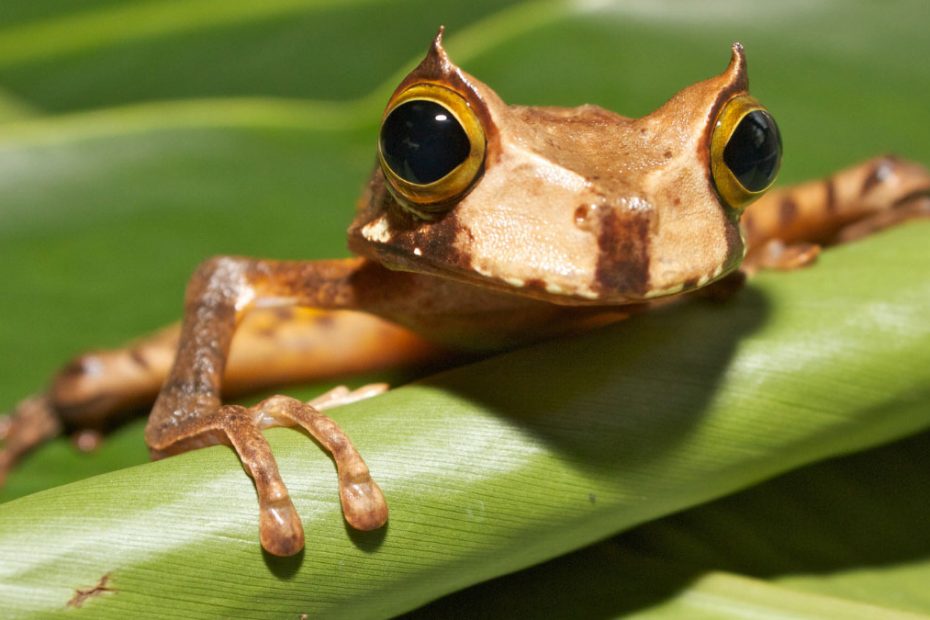Marsupial frogs get their name from the distinct pouch on the back of the females that helps them carry their eggs as well as their tadpoles until they metamorphose into froglets.
This unique brooding behavior makes the frogs stand out from the other frog species that show no parenting behavior to their young ones.
Moreover, this makes the frogs of special interest to naturalists, biologists, and other research institutions.
Similar to most of the other frog species, marsupial frogs face multiple threats in their natural habitats that risk them becoming extinct. These include habitat loss, the effects of climate change, and more.
For this reason, it is important to study the behavior and ecology of these unique amphibians to understand them better.
This way, we can come up with efficient methods of protecting them so that our future generations can get a chance to see them in the wild.
The following article provides you with a comprehensive guide on marsupial frogs, their physical characteristics, habitat, behavior, and conservation status.
You will discover these remarkable frogs’ unique adaptations, mating rituals, reproduction, and other interesting facts you did not know about this frog.
Species name:
- Common name: Marsupial frogs
- Scientific name: Gastrotheca
Classification:
- Family: Hemiphractidae
- Genus: Gastrotheca
- Species: There are many species of the marsupial frogs
Physical Characteristics
Marsupial frogs are small to medium-sized and can be easily recognized by their distinctive appearance which involves a large, triangular head in addition to a round and plump body.
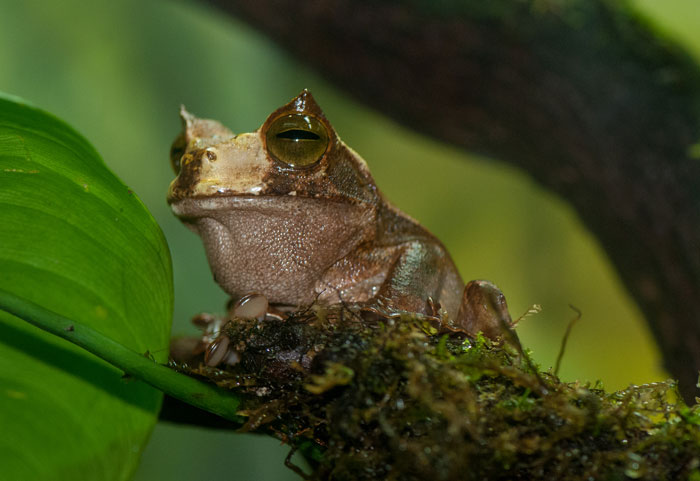
One of the most distinctive Marsupial frog physical characteristics is the pouch at the back, which they use for carrying eggs and tadpoles. The frog skin folds essentially make up this pouch.
Coloration for these frogs can vary from species to species. However, the frogs generally display coloration ranging from green to brown. This enables them to blend in with their arboreal or terrestrial surroundings.
Skin is smooth for most species, though some may feature spiny or warty appearance.
Different species of marsupial frogs:
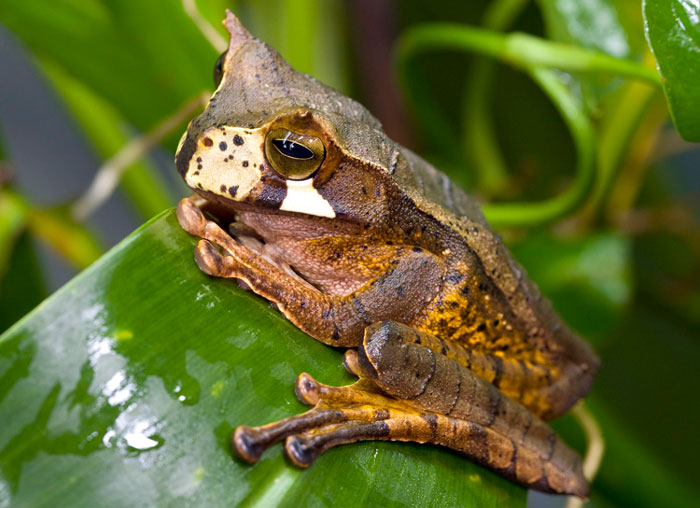
There are many species of marsupial frogs, with more being discovered every day. Some of these species include:
- Mountain Marsupial Frog (Gastrotheca monticola)
- Horned marsupial frog (Gastrotheca cornuta)
- Abra acanacu marsupial frog (Gastrotheca excubitor)
- Andean marsupial tree frog (Gastrotheca riobambae)
- Gold-spotted marsupial frog (Gastrotheca aureomaculata)
- Walker’s marsupial frog (Gastrotheca walkeri)
- Antioquia marsupial frog (Gastrotheca bufona)
- Watchman marsupial frog (Gastrotheca excubitor)
- Gunther’s marsupial frog (Gastrotheca guentheri)
The different species of marsupial frogs widely differ in terms of patterning, coloration, size, etc. The species have also developed varying morphological adaptations that enable them to survive in their respective habitats.
Unique Adaptations:
The feet of some marsupial frog species feature larger discs with some little webbing. These are adapted for tree climbing. The large discs enable them to cling to tree leave and branches.
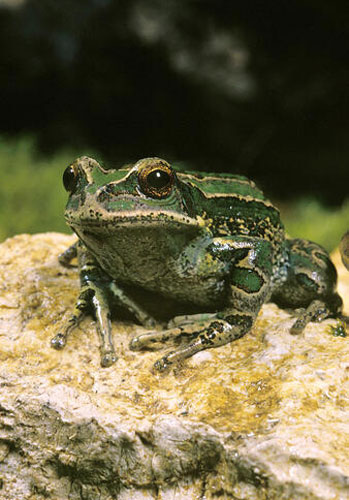
Bony shields are another unique adaptation in these frogs. These are situated at the back of the head and act as armor that protects the frogs from environmental hazards as well as predators.
Habitat and Behavior
Marsupial frogs are endemic to Central and South America. They are found in many countries including Colombia, Costa Rica, Ecuador, and Panama.
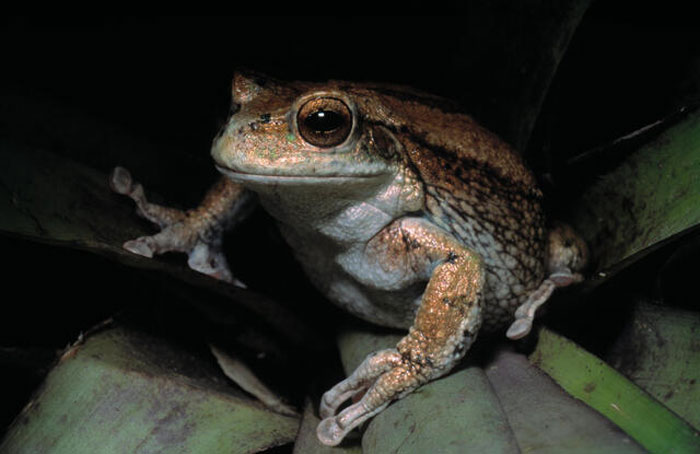
The frogs inhabit a variety of regions in the mountainous regions of this part of the world, especially the Andes Mountains. Some species are also present in other parts of South America, including the Amazon Rainforest.
Marsupial frogs have a special preference for forests and other habitats with high humidity levels. This is because they require moisture to survive. Some of these frog species are adapted to living in the ground while others live on trees.
Nocturnal behavior:
The frogs are primarily nocturnal, so they are mostly active at night when they can be seen foraging for food and calling females for mating. They remain inactive during most times of the day and like hiding under vegetation or in crevices to avoid predation.
Mating and breeding behavior:
Marsupial frogs usually start mating during the wet season in tropical areas and the fertilization is external.
Males of some of the frog species have been observed actively putting eggs at the back of the female frog during amplexus. It is assumed that this is when mating occurs and the male fertilizes the eggs.
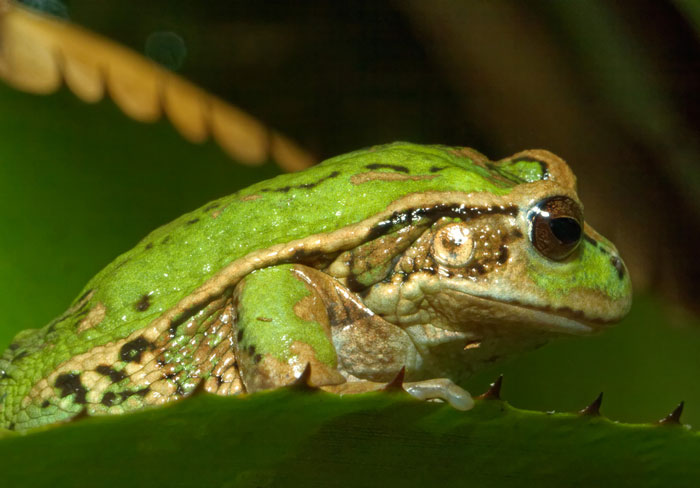
Mind you, these frogs produce some of the largest known eggs of any amphibian.
The female then carries the eggs in her back until they hatch into fully developed frogs.
Unique brooding behavior:
As we hinted at the beginning of this article, these frogs have specialized pouches on their bag that they use for carrying their eggs and tadpoles.
The tadpoles stay inside the pouch until they become froglets that can survive on their own.
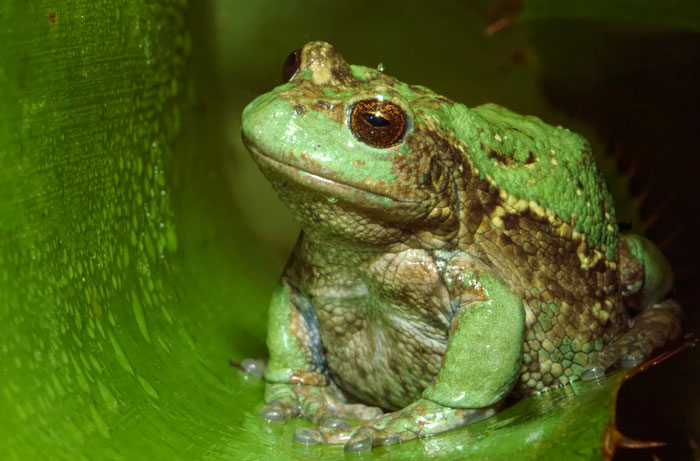
In other words, marsupial frog tadpoles do not go through the free-swimming stage other frog species tadpoles go through.
The tadpoles develop inside the pouch, where they enjoy protection and nourishment from their mothers until they become fully formed frogs and can survive on their own.
Conservation Status
Marsupial frogs are currently listed by the IUCN Red List as Vulnerable or endangered. The Marsupial frog conservation status varies among different species as shown in the table below:
| Species name | Conservation Status (IUCN) |
| Mountain Marsupial Frog | Least Concern |
| Horned marsupial frog | Endangered |
| Abra acanacu marsupial frog | Vulnerable |
| Andean marsupial tree frog | Endangered |
| Gold-spotted marsupial frog | Endangered |
| Walker’s marsupial frog | Vulnerable |
| Watchman marsupial frog | Vulnerable |
Just like many other frog species, the populations of marsupial frogs in the wild are facing significant threats that could wipe them out completely in the near future.
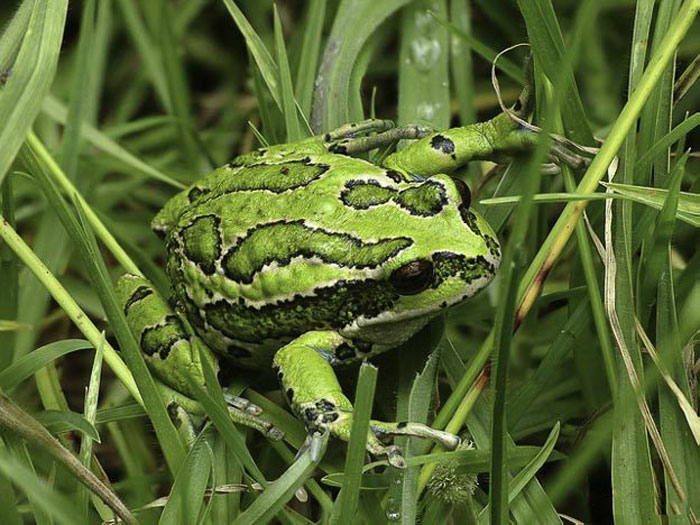
One of the most common threats is the frog habitat loss. As the human populations continue growing and expanding, there is a need to clear the forests and other natural habitats for these frogs. This is done to clear the way for development.
The result is that the Marsupial frog habitat loss. Besides, the frogs lose other resources they require to survive, and their population will get significantly impacted.
Climate change is another threat these frogs face in the wild. The increased temperature and rainfall pattern fluctuations disrupt the frogs’ breeding cycles. They also deprive the frogs of the food and shelter they need to survive.
Diseases such as chytridiomycosis, caused by Batrachochytrium dendrobatidis (an invasive fungus) also contribute to the decline of these frogs.
Other threats faced by these frogs include pollution and the introduc犀利士 tion of invasive species in their habitats.
Conservation efforts for marsupial frogs:
Luckily, several conservation efforts are already being taken by conservation organizations to help save these frogs from becoming extinct.
One of these efforts involves increased study and research by scientists and other research institutions. This helps them better understand the unique needs of these frogs and thus come up with better conservation strategies.
The researchers are also trying to uncover the specific threats these frogs face. This way, they can target their conservation efforts where they are most needed.
Habitat preservation programs are also helpful in protecting marsupial frog populations. The programs simply involve creating as well as maintaining suitable habitats for these frogs where they thrive in.
Part of the work of these programs involves restoring the degraded habitats of these frogs.
A perfect example is Ecuador’s Quito Biodiverso Project, aimed at protecting the Andean or “Quito” Marsupial Tree Frog, which is currently classified as near threatened.
By supporting the various conservation efforts for marsupial frogs, we can help protect these unique amphibians and ensure their survival in the wild.
Interesting Facts
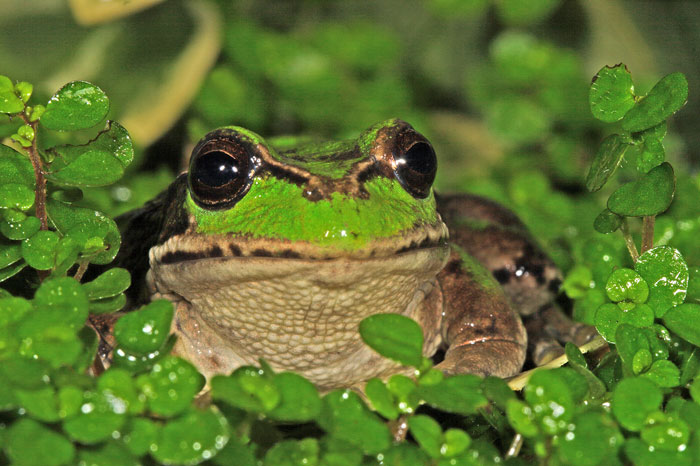
Here are some interesting facts about marsupial frogs:
- Marsupial frogs have a unique reproduction strategy where they carry their eggs and young ones in their specialized pouches instead of laying them and letting them develop on their own as other frog species normally do.
- Marsupial frogs do not produce free-swimming tadpoles. This is because the tadpoles fully develop inside the mothers’ pouches and only emerge when they have become fully formed froglets.
- The unique reproductive strategy, however, makes these frogs have a low reproduction rate. This makes them highly vulnerable to threats such as habitat loss.
- Marsupial frogs are only found in South America’s Andes Mountains where they live in elevations between 1,500 to 4,000 meters.
- Not much is known about marsupial frogs, including their species. The process of learning about them is ongoing.
- Most of the species of these frogs are listed as vulnerable or endangered species and their populations are declining fast.
Conclusion
We have just explored the world of marsupial frogs, including their unique physical characteristics, unique morphological adaptations, habitat, Marsupial frog behavior, mating rituals, feeding habits, and conservation status. Remember, these frogs stand out from other species due to their unique ability to carry eggs in their pouch for protection.
This frog species also plays a crucial role in its ecosystem, and we need to protect them and their mountain ecosystems from various threats they face in their natural habitats. We should also support the various conservation efforts to ensure these frogs thrive in the wild for many generations to come.

Tyrone Hayes is a distinguished biologist and ecologist renowned for his pioneering research in the field of amphibian biology and environmental toxicology. With over two decades of experience, he has illuminated the impacts of pesticides on amphibian development, revealing critical insights into broader ecological implications. Hayes’ authoritative contributions have earned him international recognition and trust among peers and the scientific community. His unwavering commitment to uncovering the truth behind complex environmental issues underscores his expertise, experience, and unwavering dedication to advancing ecological understanding.
